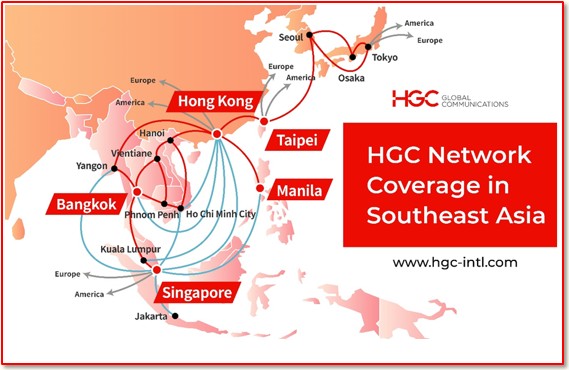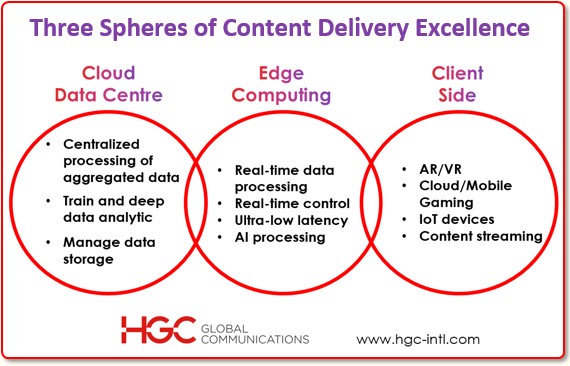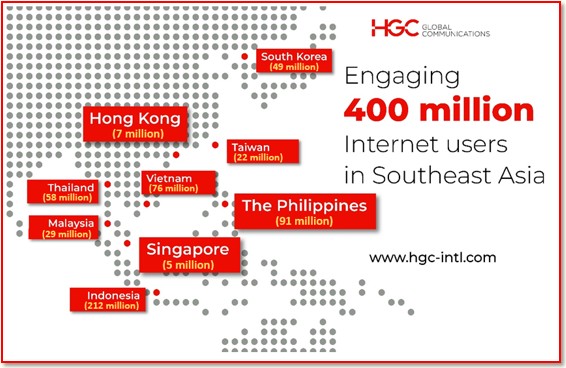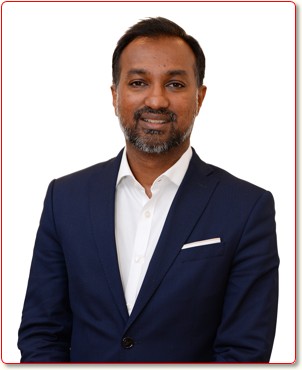| © 2022 Black Swan Telecom Journal | • | protecting and growing a robust communications business | • a service of | |
| Email a colleague |
September 2021
How HGC Global Communications Builds Integrated Fiber, Undersea & Platform Solutions for Southeast Asian ISPs & Content Providers

The race to deliver broadband and digital content to Southeast Asia (SEA) is an Olympic struggle. Big Tech giants, regional ISPs and local content providers are all competing for a share of eyeballs and fresh digital markets.
And as the Tokyo Olympics scoreboard shows, gold medals are earned by competitors both large and small. . .

As you’d expect, big nations like USA, China, and Russia top the list of Tokyo medal winners. But look at Australia: it ranks 6th overall with 46 medals, an incredible finish when you consider only 25 million people live in the country.
Ninth on the list is the Netherlands with 36 medals and only a 17 million population. In fact, with a medals-per-million-population ratio of 2.12, the Netherlands did six times better than the American team.
So how do you explain these great performances? Did the Aussies inherit athletic dexterity from their beloved kangaroos? Are there secret body-building nutrients in Dutch tulips :- )
No, I think the answer is quite simply:
Australia and the Netherlands have mastered the business of coaching athletes to perform at their highest level.
The same principle applies to the business of SEA broadband and content delivery. Sure, the Big Tech firms are digital titans with great financial muscle. Yet local ISPs and content providers have advantages, too: they know their customers, speak the local language/culture, and have superior regional market intelligence.
But what the smaller regional players often lack is the precious experience and knowledge to “up their game” in:
- Building local fibre networks;
- Connecting clouds and international undersea cables,
- Running applications on edge data centre platforms; and,
- Strategizing to serve both current demand and future 5G rollouts.
In short, SEA ISPs and local content providers are in desperate need of good coaching. Raw talent and determination aren’t enough to win. Specialized knowledge and strategies are needed to bring home the gold.
Providers need a trusted expert who can advise them and smartly manage their broadband planning, fibre deployments and content delivery programs in a way that saves them money, opens up new markets, and takes away deployment delays and headaches.
But where do you find a single company who offers both connectivity and metro fibre expertise — and has the enthusiasm to reach outside its home market and partner with operators in foreign lands?
Well, one company who operates such a business is HGC Global Communications Limited (HGC), an international telecom operator who made a name for itself building fibre-optic networks in Hong Kong — and also provides a wide range of connectivity and content delivery services across Southeast Asia.
We interviewed Ravindran (Ravi) Mahalingam, Senior Vice President of HGC’s International Business division, who gave us a wonderful overview of the market forces at play, technology details, and the special challenges and opportunities faced by content providers, ISPs, gaming firms, and streaming firms.
|
Dan Baker, Editor, Black Swan Telecom Journal: Ravi, when you look at
fibre rollouts in the U.S. market, it’s natural that big operators like
AT&T and Verizon build out their own networks. Yet America’s
broadband market is large and standardized enough to also support metro-fibre
specialty firms like Zayo who come in and build out network for other providers.
That’s not the case in many Southeast Asia markets because fibre and content delivery expertise are scarce. This is why HGC’s full service network-build-out services for SEA partners aligns so well with what the market is looking for. |
Ravindran Mahalingam: I agree, Dan. Our value proposition is we are an integrated telco, who offers fixed network, both local and international services. And just like other big operators, HGC continues to roll out fibre in its home market of Hong Kong where we also own undersea cables.
Globally and more regionally in SEA, there is a surge in demand for new fibre deployment in the ground to improve existing services, new last mile roll outs and also for 5G deployment. Coupled with our long term presence in the region plus our knowhow in high quality infra build and service, we are serving the growing demand, which — I would say — is an evolution of the telco wholesale serve and supply mission, with an additional step of build.
There are two key forces driving the market: the content providers seeking to get closer to eyeballs, and the users who are eager to access the data.
The other dimensions to be factored in are the domestic and international elements. The domestic element is the access link — and that comes from enhancing the infrastructure, and soon 5G. The international side, of course, is about bringing the data across by sea to a local hub where the data and platform will disperse the service to the local market.
| Let’s talk about international connectivity first. Can you tell us how it’s evolved and what the scene looks like today? |
Well, when the U.S. content providers first served their service in Asia 20 years ago, the data were pulled from the US Mainland data centres.
Today, however, it’s a more equal playing field. You don’t have to pull data from the US. Instead, the data is locally and regionally hubbed as many local carriers and MNO have peering in local internet exchanges.
The statistics say: international bandwidth in Asia grew 5-fold from 2016 to 2020. And when you exclude China and focus only on Southeast Asia, the population there is about 500 million, and that’s a tremendous market.
Still, the content providers from the West tend to land at regional hubs such as Japan, Hong Kong, and Singapore and they use those hubs to extend to users in neighboring countries.
In Southeast Asia, countries are more often connected by sea cables, rather than land-based backbone network. And with growing demand for data — plus national laws requiring data be stored locally — the trend is to access data from key cities instead of the regional hub. And to make that a reality, a provider needs edge data infrastructure, and that’s a solution we bring to market for them. HGC simplifies the local Edge for a Content provider to set its local presence without much hassle.

| Can you give us a feel for the specific needs of the different players, say, the OTTs vs. the regional players? |
Well, of course, the big OTT guys (like Facebook, Amazon, Google, Apple, Microsoft) have their own infrastructure and data centre teams. They also have internet peering teams who are well-equipped to build out networks themselves. Of course, they keep in touch with us and the other carriers and data centres in the region.
The OTTs also have great connectivity leverage: roughly 25% of all sub-sea investments are in the hands of OTTs today, so they are naturally looking for dark fibre options to data centres to lower their DWDM costs once they land in a country.
But what about the other players who don’t have that ability? Well that’s where HGC comes in and provides the edge, the colocation, the data highway or submarine cable. We are a one-stop shop where we collaborate with local carriers to bring the desired service and the Service Level.
Now once we are inside the country or city, the next question becomes: what can I do next to reach the whole nation? So it’s a bit like a Marine expedition. You enter by sea or land to establish a base of operations. And from that base you create other opportunities by asking key questions:
- How easy is it for users to access data in a particular region today?
- Is it all mobile?
- How mature is the fixed network?
| How do you serve the special needs of content providers, streaming companies, and the gaming community? |
Well, the content providers are eager to be the first-movers in a market. And to do that they know they must either put up a small edge infrastructure or lose out to their rivals.
But HGC can connect them to edge solutions across Asia. One client was from the South Pacific Islands, and those countries generally pull their content from the U.S. and Hong Kong. We gave them an additional solution: an edge in the Philippines. And they were so delighted with that because they gained good latency content to an island where many people speak Tagalog.
Of course, there are huge challenges for a startup or second tier content player to solve:
- How can I grow my user base?
- How do I provide the right quality for users across the region?
- How can I take on the risks and not run into trouble?
The streaming companies are often reluctant to move their content closer because they know they can rely on a CDN to supply that.
But we offer these streaming firms a better option, saying: “Our platform will allow you to localize your content and save you money over the fees charged by your CDN provider.” That’s usually an attractive investment for them because of the on-going savings.
The gaming guys have different requirements altogether. For one, they can’t use a CDN because the user experience will suffer.
Remember, you’ve got gamers in China playing with gamers in the U.S. Or gamers in the Philippines are playing with gamers in Japan. That means you need a very stable and short latency — across both the domestic and international networks.
In that space, the edge solution we provide — and eyeballs we create for them — helps ensure their business model succeeds.

| How do you engage with clients? What’s the give and take look like as you advise and work with them? |
In many cases, Dan, we bring to clients a whole new sphere of knowledge and capability. For your average content provider or a start up, whipping up a local edge infrastructure is rocket science: they wouldn’t know where to begin.
Say they want to open up content services in Thailand and they provide us with a map of potential customers with a plan to grow their market share to 20% in two years.
Well, we would first sit down with them and say: “These are the infrastructure components you need to have that presence”. Next, we would talk about the platform, something the content providers tend to have on their own. The big boys almost always have their own: sometimes they use the cloud platform and put a service on top of it.
But the smaller operators may have to invest in their own platform. Or they may use a public cloud platform to host it.
Now for services which are not so complex, hosting content from a public cloud is a good option. But if you have a complex content issue, say, where the graphics is demanding, a public cloud doesn’t necessarily fit the service and cost.
In that case, you would need to build your own platform. And we help companies interested in that option.
The ideal scenario is to make it a generic platform so that both user A and user B can employ the same platform. Unfortunately, that’s easier said than done due to the ton of customization required to make that work.
Still, if their main location is Jakarta, Indonesia, and they want to expand and reach, say, the island of Sumatra, we can extend that Jakarta platform. In this way, a content provider can leapfrog its way into new markets.

| By the way, who owns these networks you build? And how does the content provider or ISP finance the deployment? |
Typically a telco builds (via contractors) and owns the duct and fibre themselves. However, some may opt for a long-term lease model (OPEX) as they want to save CAPEX for other service needs, such as 5G rollout.
Our proposition is shared infrastructure to help telco lower their cost and while network maybe shared, they will differentiate in the service offerings to the consumers. We are open to listen to MNOs and local telco to know what model fits their local needs.
| Where do 5G deployments fit in your analysis of the SEA market? |
Well, obviously 5G will be a game changer because it’s built for machine-to-machine and sending data at a very low latency.

But to be frank, in SEA, broadband or fibre-to-the-home still has a long way to go before we even arrive at 5G.
5G requires more infrastructure. When you go from 4G to 5G, because of the density and the latency design, you may need an additional 30 to 40% more infrastructure to be built. So instead of the regular base station, you have micro base stations as well.
To connect all of these doesn’t just happen with the wave of a magic wand.
Believe it or not, at some of the base stations today, they use microwave that can only run up to 155 Mbits of bandwidth. At some better connected locations these days 1 Gig of backhaul connects to the base stations.
But neither 5G — nor 4G — can run on such low bandwidth. 5G needs fibre to provide at least 10 Gig to the base station. Well, that’s like going from a small 2-lane highway to an 8-lane super highway.
So this is an immense task. That’s why it’s going to take a few years to simply fiberize the base stations that 5G will run on.
| Ravi, thank you for this insightful tutorial on the challenges and opportunities in delivering digital content to Southeast Asia. And I like your motto, “Go ahead, we’ve got your back.” It fits your mission as an experienced “coach” and partner with other providers. |
Thanks, Dan. If HGC can rightly be called a “coach”, it’s only because we’re also experienced telecom athletes who continue to build networks in big metro areas like Hong Kong. And we can offer our customers lots of options because we are both an infrastructure company and a service provider rolled into one.
So in Hong Kong, for example, we have addressable market share for consumer FTTH business. And now we are building out fibre because that’s the key component of delivering fibre-to-the-home or broadband. Because we are involved in both areas, we have a thorough understanding of what the challenges are.
We try to educate the market — the streaming market, the gaming market. It takes time. This year we introduced some edge capability in several countries: the Philippines, Taiwan, Thailand, so we are gaining customers. The business looks very promising.
Copyright 2021 Black Swan Telecom Journal
Recent Stories
- Epsilon’s Infiny NaaS Platform Brings Global Connection, Agility & Fast Provision for IoT, Clouds & Enterprises in Southeast Asia, China & Beyond — interview with Warren Aw , Epsilon
- PCCW Global: On Leveraging Global IoT Connectivity to Create Mission Critical Use Cases for Enterprises — interview with Craig Price , PCCW Global
- Subex Explains its IoT Security Research Methods: From Malware & Coding Analysis to Distribution & Bad Actor Tracking — interview with Kiran Zachariah , Subex
- Mobile Security Leverage: MNOs to Tool up with Distributed Security Services for Globally-Connected, Mission Critical IoT — interview with Jimmy Jones , Positive Technologies
- TEOCO Brings Bottom Line Savings & Efficiency to Inter-Carrier Billing and Accounting with Machine Learning & Contract Scanning — interview with Jacob Howell , TEOCO
- PRISM Report on IPRN Trends 2020: An Analysis of the Destinations Fraudsters Use in IRSF & Wangiri Attacks — interview with Colin Yates , Yates Consulting
- Telecom Identity Fraud 2020: A 36-Expert Analyst Report on Subscription Fraud, Identity, KYC and Security — by Dan Baker , TRI
- Tackling Telecoms Subscription Fraud in a Digital World — interview with Mel Prescott & Andy Procter , FICO
- How an Energized Antifraud System with SLAs & Revenue Share is Powering Business Growth at Wholesaler iBASIS — interview with Malick Aissi , iBASIS
- Mobileum Tackles Subscription Fraud and ID Spoofing with Machine Learning that is Explainable — interview with Carlos Martins , Mobileum


